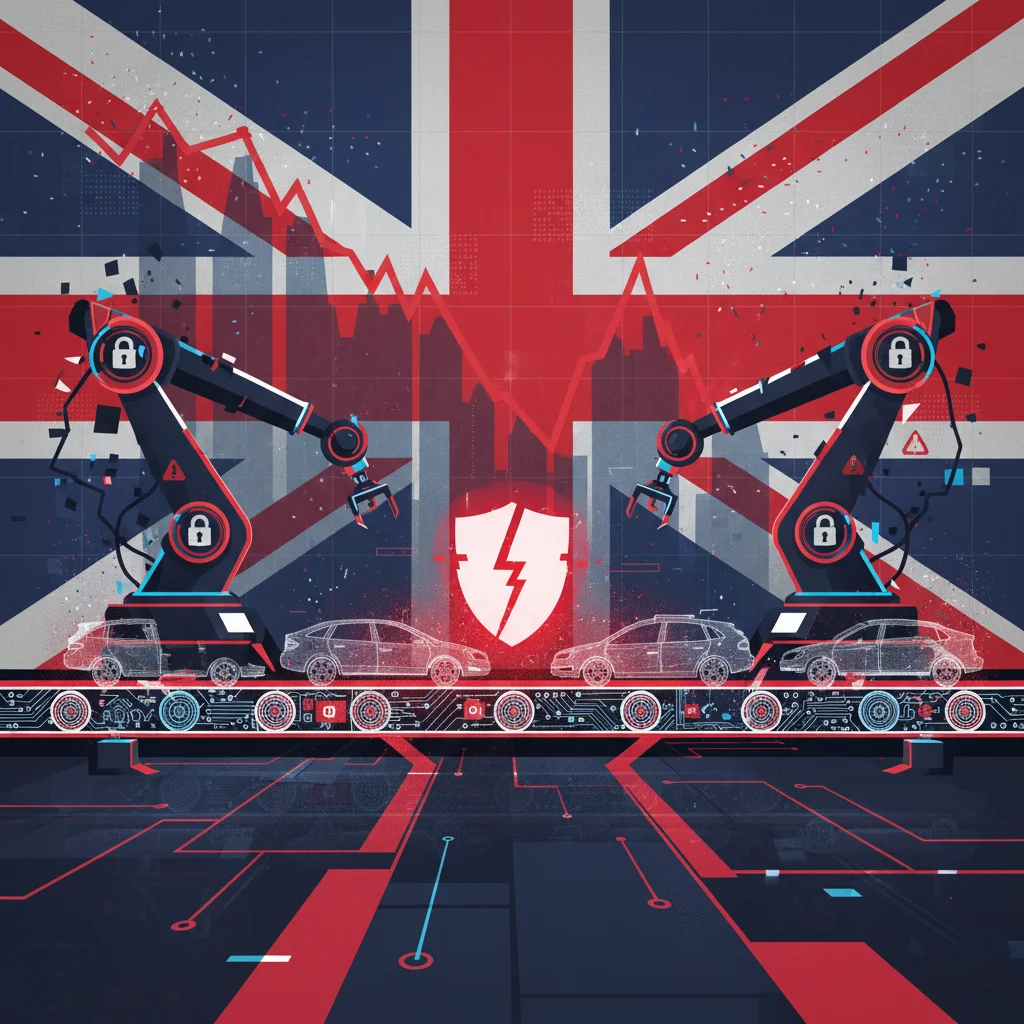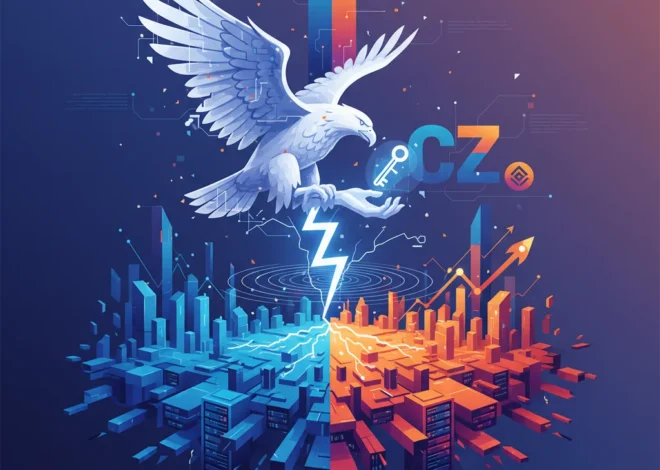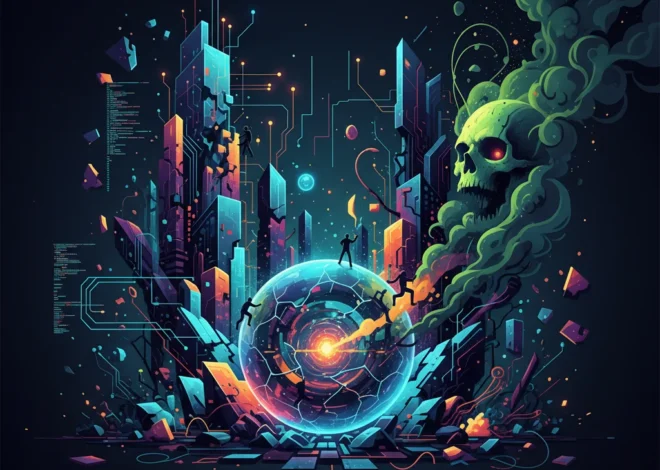
Code Red on the Assembly Line: How One Cyber-Attack Drove UK Car Production to a 70-Year Low
When a Line of Code Halts an Assembly Line
Imagine the hum of a modern car factory: robotic arms moving with balletic precision, automated vehicles gliding across the floor, and a symphony of machines assembling the vehicles of tomorrow. Now, imagine it all grinding to a sudden, silent halt. Not because of a power outage or a labor strike, but because of a malicious string of code. This isn’t a scene from a sci-fi thriller; it’s the reality that Jaguar Land Rover (JLR) faced, and its consequences have sent shockwaves through the entire UK manufacturing sector.
In a startling revelation, UK car production for September plummeted to its lowest level in 70 years. According to a report from the BBC, the number of cars manufactured was the smallest for any September since 1952. To put that in perspective, this figure is lower than the output during the height of the pandemic lockdowns. The culprit wasn’t a global supply chain crisis or economic downturn, but a targeted cyber-attack on one of the nation’s most iconic automakers.
This single event serves as a deafening wake-up call for every industry, from startups to global enterprises. It starkly illustrates how the digital transformation we’ve championed—powered by software, the cloud, and automation—has created unprecedented efficiencies but also introduced systemic vulnerabilities. The line between the digital and physical worlds has blurred, and for modern manufacturing, it has vanished entirely. Let’s dissect what this means for the future of industry, cybersecurity, and the role of artificial intelligence in protecting our most critical infrastructures.
The Anatomy of a Modern Factory: More Data Than Steel
To understand how a digital breach can stop a physical assembly line, we need to look under the hood of a 21st-century automotive plant. The traditional image of greasy overalls and clanking metal is outdated. Today’s factories are hyper-connected, software-defined ecosystems.
Every stage of production is orchestrated by a complex web of interconnected systems:
- Just-in-Time (JIT) Inventory: Parts and materials are managed by sophisticated SaaS platforms that track components from thousands of global suppliers. An order for a specific part is triggered automatically, with delivery scheduled to the minute. If this system is compromised, the entire supply chain freezes.
- Industrial Internet of Things (IIoT): Sensors on machinery constantly stream data to cloud platforms, where machine learning algorithms predict maintenance needs. This predictive maintenance is a cornerstone of modern efficiency. An attack on these systems can lead to unforeseen equipment failure or, worse, allow an attacker to manipulate physical machinery.
- Robotics and Automation: The robots on the assembly line aren’t just performing repetitive tasks; they are executing complex programming that can be adjusted in real-time based on production needs. This software is a prime target for attackers seeking to cause disruption.
When JLR was hit by a cyber-attack, it wasn’t just their email servers that were at risk. The attackers likely targeted the core operational technology (OT) and enterprise resource planning (ERP) systems—the digital nervous system that connects the supply chain, factory floor, and distribution networks. Without these systems, JLR couldn’t track parts, direct robots, or even know which car configurations to build. The result was a complete production halt, the economic impact of which was so significant it dragged down the entire nation’s car manufacturing statistics for the month (source).
Silicon Valley's AI Hangover: Is the Bubble About to Burst?
The New Battlefield: IT vs. OT Cybersecurity
The attack on JLR highlights a critical, and often overlooked, distinction in the world of cybersecurity: the difference between Information Technology (IT) and Operational Technology (OT). While IT security focuses on protecting data, OT security is about protecting the physical processes and machinery that data controls. The priorities and risks are fundamentally different, and this is where many organizations, even large ones, fall short.
Here’s a breakdown of the key differences:
| Aspect | Traditional IT Security | Operational Technology (OT) Security |
|---|---|---|
| Primary Goal | Protecting Confidentiality, Integrity, Availability (CIA Triad) | Ensuring Safety, Reliability, and Productivity |
| System Uptime | Rebooting a server is common practice. | Downtime is catastrophic; systems must run 24/7 for years. |
| Operating Systems | Modern, frequently patched systems (Windows, Linux). | Often legacy or proprietary systems that cannot be easily patched. |
| Risk Tolerance | Data loss or financial theft are primary concerns. | Physical damage, environmental incidents, and human safety are paramount. |
For decades, OT systems were “air-gapped”—physically isolated from the internet and corporate IT networks. But the drive for efficiency, remote monitoring, and data-driven innovation has connected these two worlds. This convergence creates enormous value but also opens a gateway for attackers to move from the corporate network into the factory floor. The JLR incident is a stark reminder that a breach that starts with a phishing email can end with a silent assembly line (source).
Is the AI Boom a High-Tech Cargo Cult?
Fighting Fire with Fire: Using AI and Automation as a Shield
While technology has created these new vulnerabilities, it also offers our most powerful solutions. The same forces of AI, machine learning, and automation that optimize production can be harnessed to build a more resilient and secure industrial ecosystem. This is a massive opportunity for tech professionals, developers, and startups.
1. AI-Powered Threat Detection
Human security analysts can’t possibly monitor the billions of data points flowing through a modern corporate and industrial network. This is where artificial intelligence excels. AI-driven security platforms can:
- Establish Baselines: Machine learning algorithms learn the “normal” behavior of a network. Is a sensor on production line 3 suddenly sending data to an unknown IP address in another country? The AI can flag this anomaly instantly.
- Predictive Analytics: By analyzing global threat intelligence, AI can predict the types of attacks an organization is most likely to face and recommend proactive defenses.
- Automate Response: When a threat is detected, an AI system can automatically quarantine the affected device or segment of the network in milliseconds, containing the breach before it can spread from the IT network to the OT environment.
2. Secure Cloud and DevSecOps
The migration to the cloud and the adoption of SaaS platforms are irreversible trends. The key is to do it securely. This means building security into the development lifecycle from the very beginning—a practice known as DevSecOps. For developers and those in programming, this means writing secure code is no longer optional. For companies, it means leveraging the sophisticated, built-in security tools offered by major cloud providers and choosing SaaS vendors who make security a core part of their product.
3. The Rise of Cybersecurity Startups
The unique challenges of OT security have created a fertile ground for innovation. A new generation of startups is emerging, focused specifically on securing industrial control systems (ICS) and cyber-physical assets. These companies are developing specialized tools that can safely monitor legacy OT equipment, translate industrial protocols into security alerts, and provide factory operators with a clear view of their cyber-risk without disrupting production.
Code on the Frontline: Why Europe's Military Needs a Silicon Valley Reboot
The Road Ahead: Building the Resilient Factory of the Future
The JLR cyber-attack and the resulting 70-year production low is more than just a headline; it’s a defining moment. It marks the point where the abstract threat of a cyber-attack became a tangible, physical, and economically devastating reality for a mainstream industry. It proved, unequivocally, that a company’s cybersecurity posture is as critical to its output as its supply chain and its workforce.
For entrepreneurs, developers, and tech leaders, the path forward is clear. The next wave of industrial innovation won’t just be about making things faster or cheaper. It will be about making them more resilient. It will be about building systems that anticipate failure, contain damage, and recover quickly. It will involve embedding AI and intelligent automation not just on the assembly line, but deep within the security fabric of the organization.
The silent factories at JLR are a warning. But for those ready to innovate, they are also a call to action—a massive opportunity to build the secure, intelligent, and resilient industries of tomorrow.


